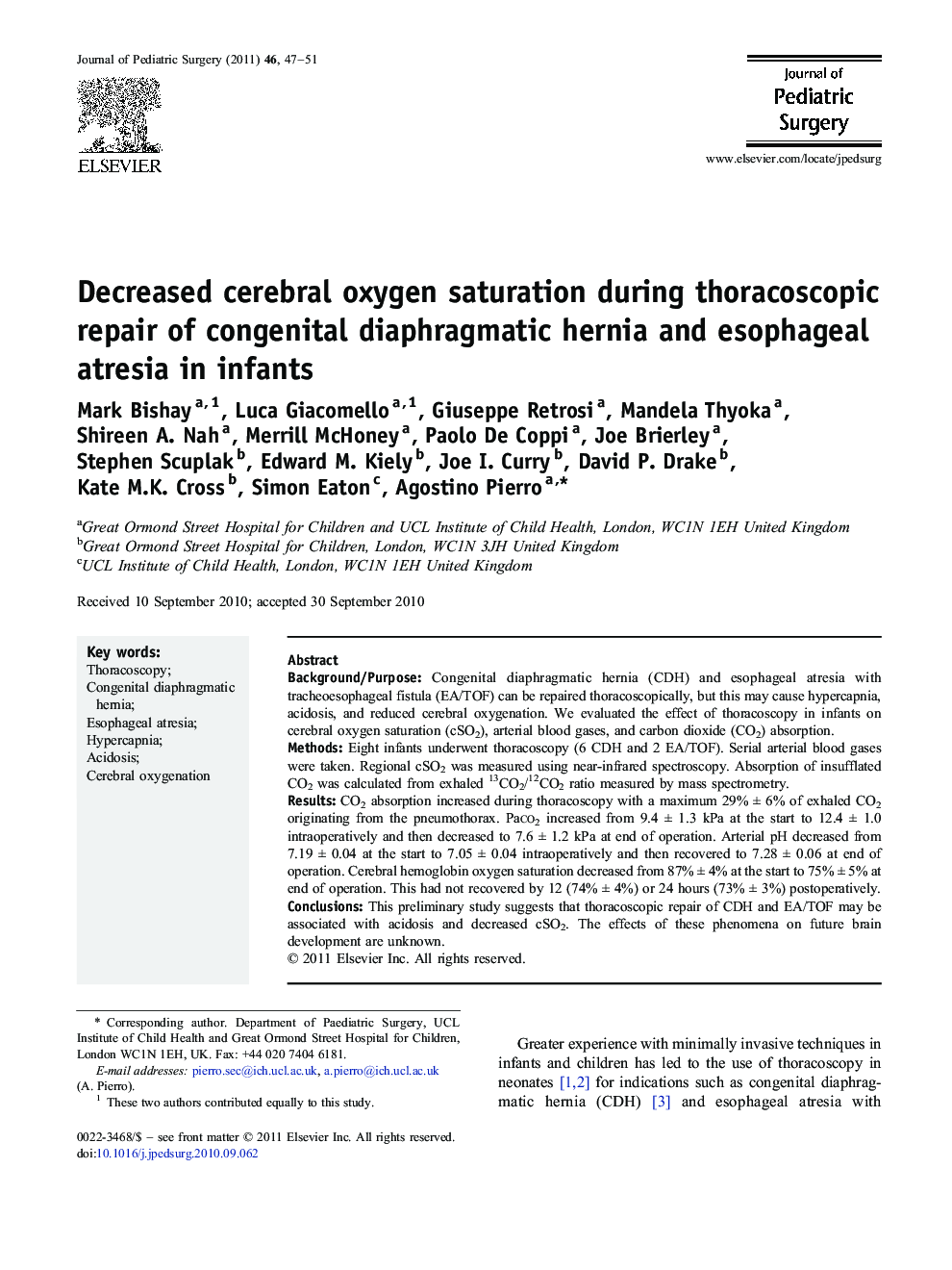| Article ID | Journal | Published Year | Pages | File Type |
|---|---|---|---|---|
| 4157937 | Journal of Pediatric Surgery | 2011 | 5 Pages |
Background/PurposeCongenital diaphragmatic hernia (CDH) and esophageal atresia with tracheoesophageal fistula (EA/TOF) can be repaired thoracoscopically, but this may cause hypercapnia, acidosis, and reduced cerebral oxygenation. We evaluated the effect of thoracoscopy in infants on cerebral oxygen saturation (cSO2), arterial blood gases, and carbon dioxide (CO2) absorption.MethodsEight infants underwent thoracoscopy (6 CDH and 2 EA/TOF). Serial arterial blood gases were taken. Regional cSO2 was measured using near-infrared spectroscopy. Absorption of insufflated CO2 was calculated from exhaled 13CO2/12CO2 ratio measured by mass spectrometry.ResultsCO2 absorption increased during thoracoscopy with a maximum 29% ± 6% of exhaled CO2 originating from the pneumothorax. Paco2 increased from 9.4 ± 1.3 kPa at the start to 12.4 ± 1.0 intraoperatively and then decreased to 7.6 ± 1.2 kPa at end of operation. Arterial pH decreased from 7.19 ± 0.04 at the start to 7.05 ± 0.04 intraoperatively and then recovered to 7.28 ± 0.06 at end of operation. Cerebral hemoglobin oxygen saturation decreased from 87% ± 4% at the start to 75% ± 5% at end of operation. This had not recovered by 12 (74% ± 4%) or 24 hours (73% ± 3%) postoperatively.ConclusionsThis preliminary study suggests that thoracoscopic repair of CDH and EA/TOF may be associated with acidosis and decreased cSO2. The effects of these phenomena on future brain development are unknown.
